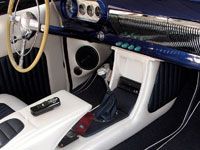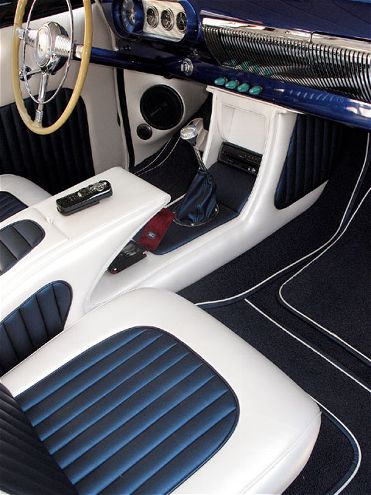

Au·Di·Bil·I·Ty: The Capability Of Being Heard
OK, for all intents and purposes, a hot rod by definition itself is one of the most, if not the most, audible autos on the road today. Clearly, the owner is responsible for just how loud the vehicle is (up until the point where someone else steps in, which is usually accompanied by a citation of some sorts), but when you really think about it, that noise is for others, 'cause who really wants to drive a loud car? Someone who wants others to notice, that's who. In other words, hot rodders. But, at the same time, most hot rodders also appreciate good music, even when they're driving-especially when behind the wheel of that same loud car.
Unfortunately, creating a decent sound system for a typical hot rod or custom isn't as easy as it may sound because, as we all know, no hot rod or custom is typical. While you can head down to Manny, Moe & Jack's and grab a "kit" stereo system for most late-model applications, what do you think that friendly person behind the counter's going to say when you inquire about an application for your '53 Chevy Bel Air? Probably nothing, but rather return your question with a blank stare or look of sheer confusion. In this case, you have two options: piece together basic components to make due, or step up and have a professional make your car's interior a mobile sound (and possible video) theater. If you're questioning the reasoning for the second option, let's discuss further.
First, you have to appreciate music to even consider putting any amount of time and money into your car's system. Otherwise, you're better off with a basic radio and a pair of speakers. For the true aficionado, however, it requires more than just the right equipment to provide music the way it's intended to be heard-it takes some know-how, mainly when it comes to placement of speakers and choosing the right kind. Beyond that, your car needs to be retrofitted in order to handle the high-powered components and what they can-and will-do for you.
Say you were to acquire the absolute finest sound system components money could buy. If you went and installed them directly in your car, they'd probably sound no better than the same stuff your neighbor bought at Pep Boys. Why? Because your car's interior wasn't properly retrofitted. Does the term "tin can" sound familiar? Without quality sound deadeners and insulation, that's exactly what any music will sound like, as the acoustics are no better than a huge tin can. Furthermore, the components need to be housed properly, especially the drivers (speakers), as their placement is just as important as how they're mounted. This is where enclosures come into the picture, as they not only direct the speakers accordingly, they also provide ample backspace (enclosed air) to allow them to sing as they were meant to. Starting to see why it's not so easy now? Hopefully, the following article will give you more insight and understanding on having your own mobile theater created-correctly.
The Audio Shoppe in Riverside, California, has been designing and installing custom car audio systems since neon clothing was in vogue-the first time. Clear back to the mid-'80s, they've been outfitting everything from Deuce roadsters to 40-foot riverboats with high-end A/V setups for celebrities and average folk alike, so they know a thing or two about the subject at hand. With a full complement of Kenwood's Excelon series components, we stopped by one afternoon to see if the crew at Audio Shoppe could do a little something with a fairly modified '53 Chevy. They were quick to oblige. Not too long afterward, we headed due south to Roger Starkey to have a pseudo period-style (modern vintage?) interior done and to finish up the wood- and 'glass-work Audio Shoppe created in appropriate fashion. We'll follow up next month with full documentation of the upholstery job at Auto Trim.